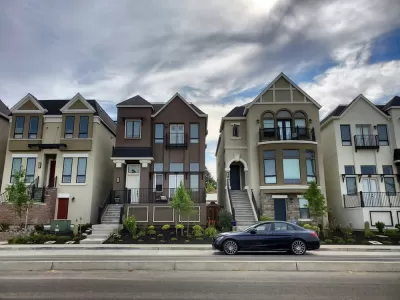With pandemic-era renter protections ending and rents rising by close to 20 percent, renters in Sacramento are finding it harder to afford housing in the region.

The wave of evictions feared by housing advocates as COVID-19 renter protections came to an end is hitting Sacramento as the last remaining eviction protection measure draws to a close at the end of this month. As stated in an article by Alexandra Yoon-Hendricks and Theresa Clift in The Sacramento Bee, “Typical rents in the Sacramento region increased nearly 20% last year. Even full-time workers struggle.”
“According to an estimate from the California Housing Partnership, a person needs to earn at least $31.25 an hour — or more than twice the minimum wage — to afford the median rent of a two-bedroom home in Sacramento County without spending more than 30% of their pay on housing.” The article continues, “The city’s Tenant Protection Program, which the council adopted in 2019, prohibits landlords from raising rent more than 10%, annually, but does not apply to renters of single-family homes.”
Despite renter protections, more than 1,231 evictions took place in Sacramento County between march 2021 and March 2022, affecting low-income households the most. “About 42% of sheriff lockouts that occurred in the second year of the pandemic took place in a census tract with a poverty rate of 20% or more.” Meanwhile, over 30,000 people who applied for rent relief have not received it—and are not likely to. “The agency said it has processed many of those applications through its wait list, but that it simply doesn’t have the funding required to aid all those households.”
FULL STORY: Exclusive: Evictions soar in Sacramento as remaining COVID tenant protections set to end

Trump Administration Could Effectively End Housing Voucher Program
Federal officials are eyeing major cuts to the Section 8 program that helps millions of low-income households pay rent.

Planetizen Federal Action Tracker
A weekly monitor of how Trump’s orders and actions are impacting planners and planning in America.

Ken Jennings Launches Transit Web Series
The Jeopardy champ wants you to ride public transit.

Washington Legislature Passes Rent Increase Cap
A bill that caps rent increases at 7 percent plus inflation is headed to the governor’s desk.

From Planning to Action: How LA County Is Rethinking Climate Resilience
Chief Sustainability Officer Rita Kampalath outlines the County’s shift from planning to implementation in its climate resilience efforts, emphasizing cross-departmental coordination, updated recovery strategies, and the need for flexible funding.

New Mexico Aging Department Commits to Helping Seniors Age ‘In Place’ and ‘Autonomously’ in New Draft Plan
As New Mexico’s population of seniors continues to grow, the state’s aging department is proposing expanded initiatives to help seniors maintain their autonomy while also supporting family caregivers.
Urban Design for Planners 1: Software Tools
This six-course series explores essential urban design concepts using open source software and equips planners with the tools they need to participate fully in the urban design process.
Planning for Universal Design
Learn the tools for implementing Universal Design in planning regulations.
Heyer Gruel & Associates PA
Ada County Highway District
Institute for Housing and Urban Development Studies (IHS)
City of Grandview
Harvard GSD Executive Education
Toledo-Lucas County Plan Commissions
Salt Lake City
NYU Wagner Graduate School of Public Service





























